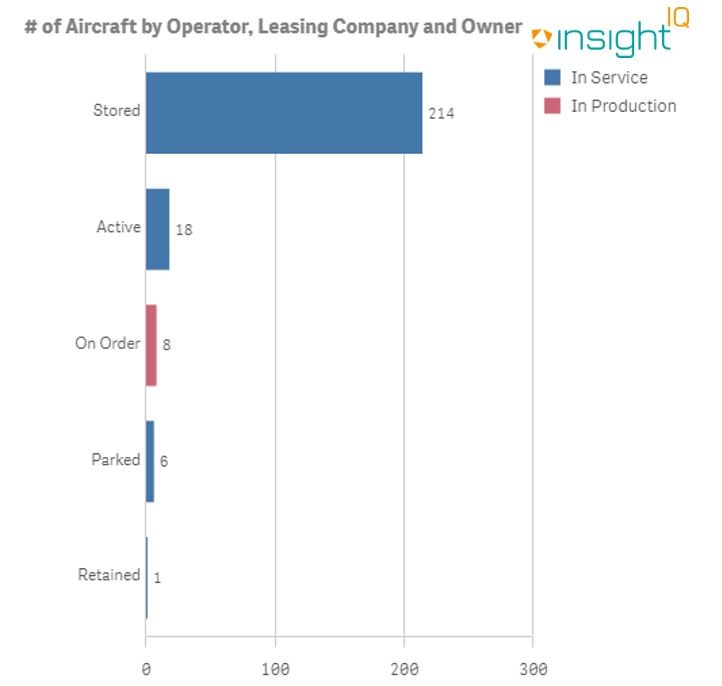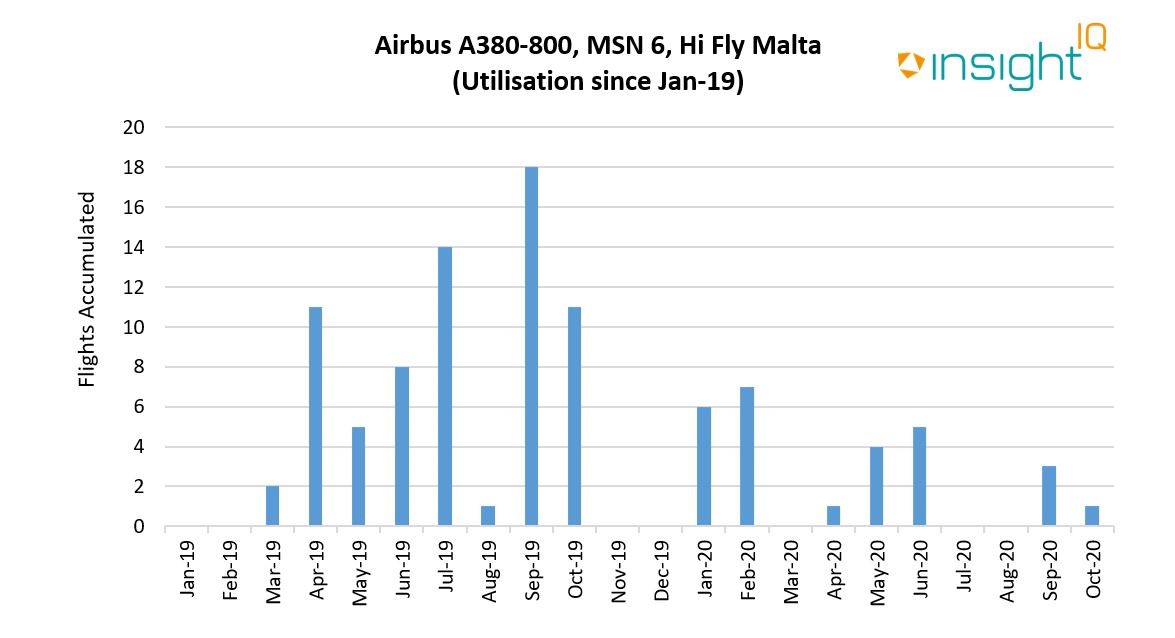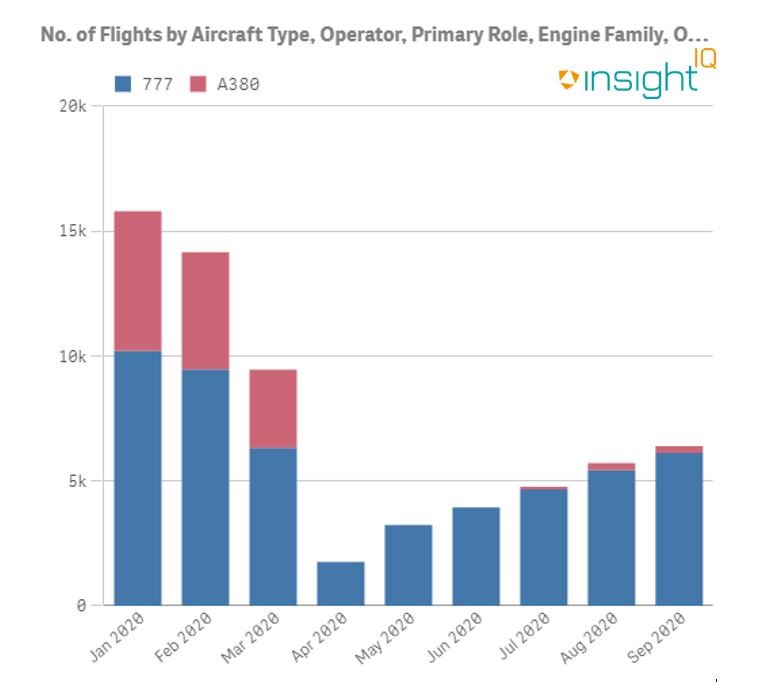16/11/2020
The Airbus A380 is one of the aircraft types worst affected by the Coronavirus pandemic, 87% of the fleet currently parked or stored according to InsightIQ, IBA's online intelligence platform. The following chart illustrates the A380's present fleet status:
 Source: IBA InsightIQ
Source: IBA InsightIQ
During Covid, the A380 has been the subject of numerous fleet exit and/or long-term storage plans with severely limited secondary market prospects. The only recorded transition to a secondary carrier is that of an ex-SIA aircraft, MSN 6, to Maltese charter carrier Hi Fly Malta. As such, IBA has been watching the Hi Fly A380 closely. It entered service in 2018 and, whilst it seemed a positive move then, the aircraft's utilisation has since been somewhat limited. The following chart shows the number of flights accrued since January 2019.

Source: IBA InsightIQ
Since entering service with Hi Fly Malta, InsightIQ records MSN 6 having flown 119 cycles, approximately 4.25 flights per month. In 2020 the aircraft has accumulated only 28 flights, a marked decline since the onset of the Coronavirus pandemic.
It appears Hi Fly Malta will serve its markets with the smaller capacity aircraft within its fleet; the carrier recently announced it will return its A380 aircraft later this year. The decision is consistent with the opinion of most Airbus A380 operators. Many have been returning smaller capacity widebodies to service while their A380s remain in storage.
Even Emirates, the largest A380 operator, has returned few of its fleet to service as depicted in the following chart from InsightIQ. It compares monthly Airbus A380 flights with Emirates' Boeing 777 fleet. IBA understands Emirates is converting some A380s for operation in temporary cargo roles, which should improve utilisation to some extent.

Source: IBA InsightIQ
Despite positive news surrounding a Coronavirus vaccine, IBA forecasts slower recovery for the longer-haul international and business travel sectors. Unfortunately, these are key segments for the A380, with its high capacity and four-engine design, which creates a gloomy outlook for the aircraft's performance in the near- to medium-term. As such, storage levels are likely to remain high.
IBA's InsightIQ analysis platform flexibly illustrates multiple asset, fleet and market positions, actual and potential, to inform client choices and identify acquisition opportunities. Immediate access to crucial aircraft, engine, lease rate and fleet data eases appreciation of historic and future aircraft concentrations and operator profiles.
Author
See full profileRelated content